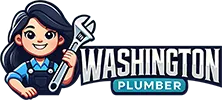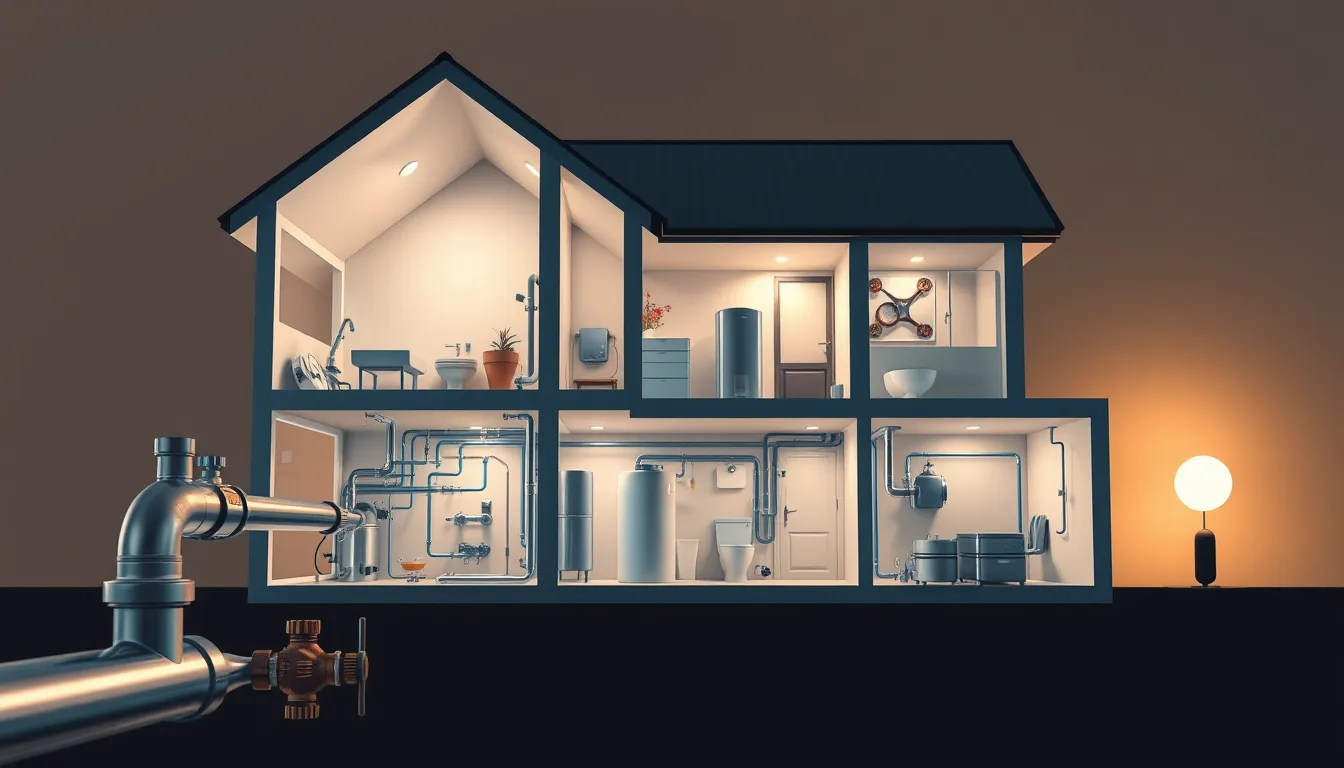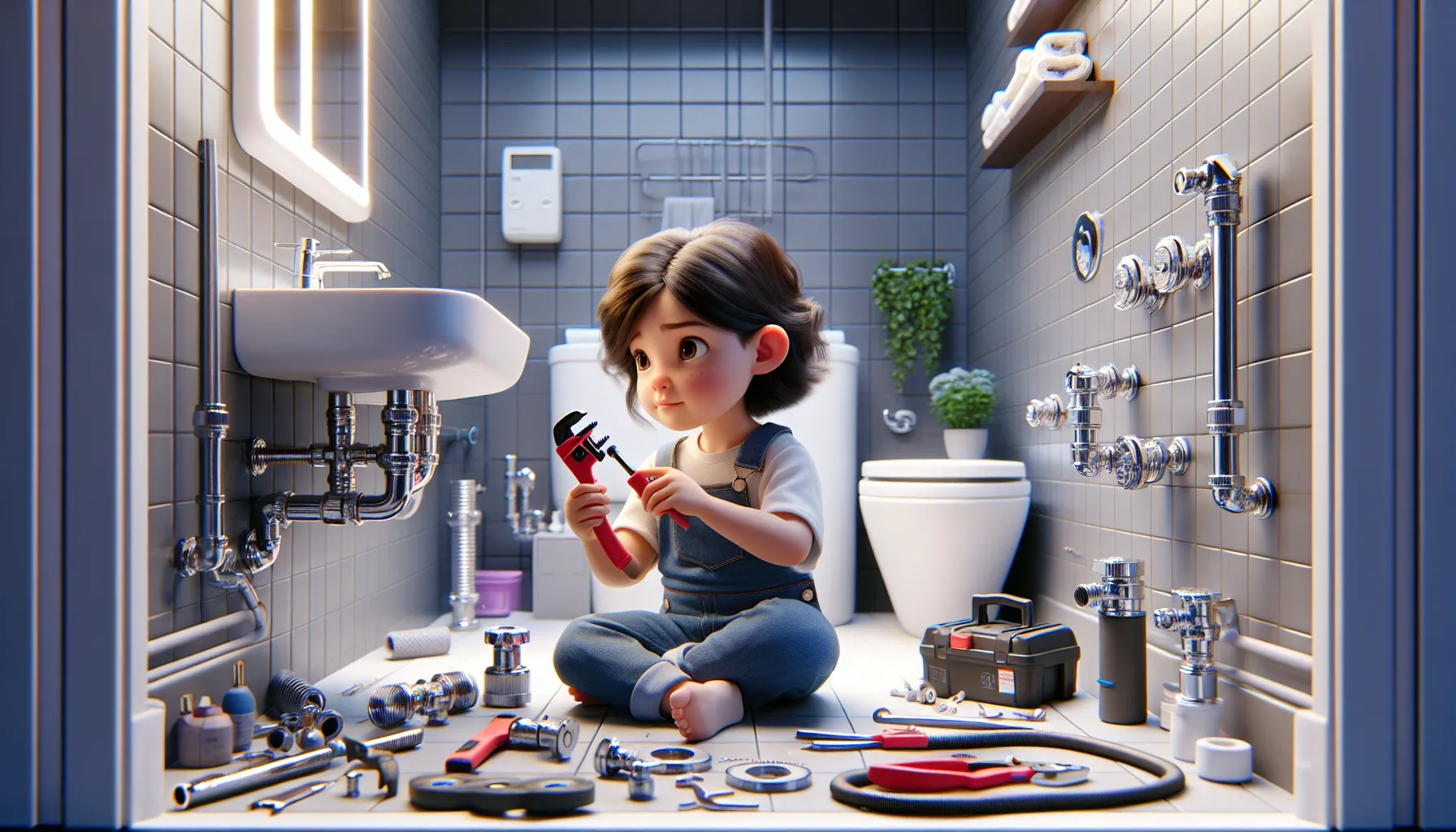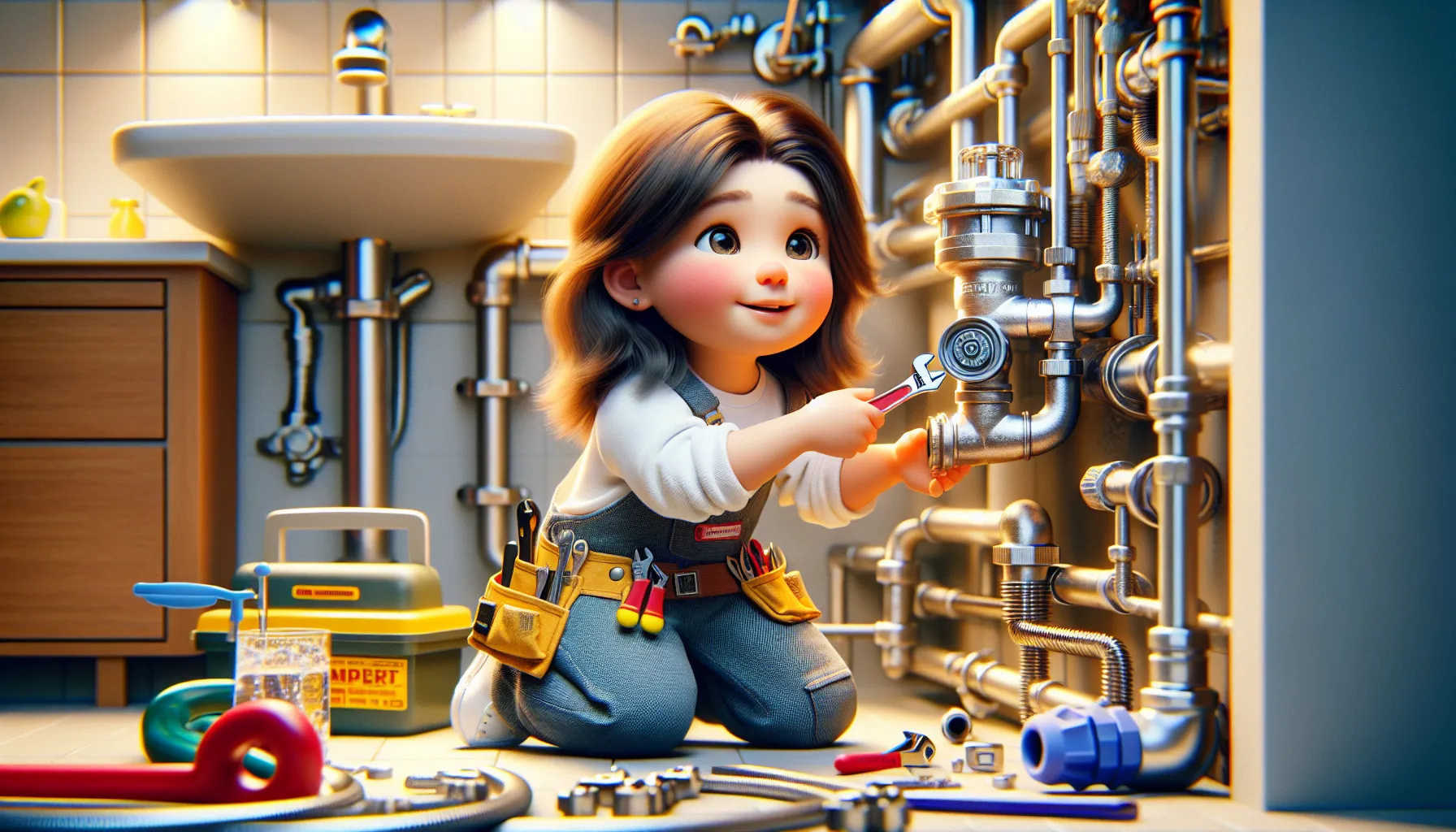Just as the circulatory system is vital to our body’s health, a home’s plumbing system is crucial to its functionality and comfort. This intricate network of pipes, fixtures, and appliances works tirelessly behind the scenes to bring clean water in and carry waste out, much like the veins and arteries that transport blood throughout our bodies. Understanding your home’s plumbing is not just about convenience; it’s about maintaining the lifeblood of your living space.
According to the Environmental Protection Agency, the average American family uses more than 300 gallons of water per day at home, with approximately 70% of this usage occurring indoors. Moreover, household leaks can waste nearly 10,000 gallons of water annually. These statistics highlight the importance of understanding and maintaining our plumbing systems for both conservation and cost-saving purposes.
In this comprehensive guide, we’ll explore the various components of a typical home plumbing system, how water flows through your home, and essential maintenance tips to keep everything running smoothly. Whether you’re a new homeowner or simply looking to deepen your understanding of your home’s infrastructure, this guide will provide valuable insights into the world of residential plumbing.
The Journey of Water Through Your Home
The story of your home’s plumbing begins at the municipal water supply or your private well. From there, water embarks on a journey through your home’s plumbing system, much like a traveler navigating a complex network of roads and highways.
The main water line, typically buried underground, serves as the primary artery bringing fresh water into your home. This line is usually made of durable materials such as copper, PVC, or cross-linked polyethylene (PEX) to withstand the pressures of constant water flow and varying ground conditions.
Once inside your home, the main water line branches off into smaller pipes, creating a distribution network that reaches every corner of your house. These smaller pipes, often hidden behind walls or under floors, act as the capillaries of your home’s plumbing system, delivering water to various fixtures and appliances.
At each point of use – be it a faucet, showerhead, or appliance – the water’s journey temporarily ends as it fulfills its purpose. But the story doesn’t end there. After use, water begins a new journey through your home’s drainage system.
Wastewater from sinks, showers, and appliances enters the drain pipes, which slope gently downward to allow gravity to guide the water’s flow. These pipes converge into larger drain lines, eventually leading to the main sewer line that exits your home.
The main sewer line, another crucial component of your plumbing system, carries all wastewater away from your home to either a municipal sewer system or a septic tank on your property. This final leg of the water’s journey through your home ensures that waste is safely and efficiently removed, maintaining a hygienic living environment.
Key Components of Your Home’s Plumbing System
Understanding the various components of your plumbing system is crucial for effective maintenance and troubleshooting. Let’s explore some of the key players in this intricate network:
- Water Heater: This essential appliance ensures you have hot water for showers, dishwashing, and laundry. Traditional tank-style water heaters store and heat a large volume of water, while tankless models heat water on demand. Regular maintenance of your water heater, such as flushing the tank annually, can extend its lifespan and improve efficiency.
- Shut-off Valves: These unsung heroes of your plumbing system allow you to stop water flow in case of leaks or repairs. The main shut-off valve controls water flow to your entire home, while individual shut-off valves are typically located near each fixture or appliance. Knowing the location of these valves and how to operate them can be crucial in preventing water damage during emergencies.
- Traps: These U-shaped pipe sections, found under sinks and in other drains, serve a vital purpose in your plumbing system. They retain a small amount of water, creating a seal that prevents sewer gases from entering your home. Regular cleaning of traps can prevent clogs and ensure they continue to function effectively.
- Vent Stack: This vertical pipe, often visible on your roof, allows air into the drainage system. It prevents the formation of vacuums in the pipes, which could impede proper drainage and cause gurgling sounds in your plumbing. Keeping the vent stack clear of debris is essential for maintaining proper drainage throughout your home.
- Water Meter: Usually located near where the main water line enters your home, the water meter measures your household’s water usage. Regular monitoring of your water meter can help detect leaks and track your conservation efforts.
- Pressure Regulator: This device maintains safe water pressure levels within your home’s plumbing system. Excessive water pressure can damage pipes and fixtures, while low pressure can lead to poor performance. If you notice significant changes in water pressure, it may be time to have your pressure regulator checked or replaced.
Common Plumbing Materials and Their Characteristics
The materials used in your plumbing system play a crucial role in its longevity and performance. Here’s an overview of common plumbing materials you might encounter in your home:
- Copper: Known for its durability and corrosion resistance, copper has been a popular choice for water supply lines for decades. It can handle high temperatures and pressures, making it suitable for both hot and cold water lines. However, copper can be expensive and may be prone to pinhole leaks in areas with acidic water.
- PVC (Polyvinyl Chloride): This plastic material is commonly used for drain lines and cold water supply lines. PVC is lightweight, affordable, and resistant to corrosion. However, it’s not suitable for hot water lines as high temperatures can cause it to deform.
- PEX (Cross-linked Polyethylene): A relatively newer material in residential plumbing, PEX is flexible, making it easier to install in tight spaces. It’s resistant to freezing and scale buildup, making it a popular choice for both hot and cold water lines. However, PEX can be damaged by prolonged exposure to sunlight and is not suitable for outdoor use.
- Cast Iron: Often found in older homes, cast iron pipes are known for their strength and sound-dampening properties. They’re commonly used for main sewer lines and vent stacks. While durable, cast iron pipes can corrode over time and may need replacement in older homes.
- ABS (Acrylonitrile Butadiene Styrene): Similar to PVC, ABS is a plastic material used primarily for drain and vent lines. It’s known for its impact resistance and ability to withstand cold temperatures. However, it’s not as common in residential plumbing as PVC.
Understanding the materials used in your plumbing system can help you make informed decisions about repairs and replacements, ensuring the longevity and efficiency of your home’s plumbing.
Identifying and Addressing Common Plumbing Issues
Even with proper maintenance, plumbing issues can arise. Being able to identify and address common problems can save you time, money, and potential water damage. Here are some issues to watch out for:
- Leaks: From dripping faucets to hidden pipe leaks, water leakage is one of the most common plumbing problems. Signs of leaks include water stains on walls or ceilings, unexplained increases in water bills, or the sound of running water when no fixtures are in use. Regular inspections of visible pipes and prompt attention to any signs of leaks can prevent significant water waste and damage.
- Low Water Pressure: If you notice weak water flow from faucets or showerheads, you may be experiencing low water pressure. This can be caused by mineral buildup in pipes or fixtures, partially closed valves, or leaks in the system. Sometimes, simply cleaning aerators or showerheads can resolve the issue. For more persistent problems, it may be necessary to consult a professional plumber.
- Clogged Drains: Slow-draining sinks or standing water in showers are signs of clogged drains. While minor clogs can often be resolved with a plunger or natural cleaning methods (like baking soda and vinegar), more severe blockages may require professional intervention. Preventing clogs by using drain strainers and avoiding disposing of grease or large food particles down the drain can save you from future headaches.
- Running Toilet: A toilet that continues to run after flushing is not only annoying but can waste a significant amount of water. Often, this is due to a faulty flapper or fill valve inside the tank. These components are relatively easy and inexpensive to replace, making this a manageable DIY project for many homeowners.
- Water Heater Issues: Problems with your water heater can range from a lack of hot water to strange noises coming from the tank. Regular maintenance, such as flushing the tank annually and checking the anode rod, can prevent many common water heater issues. However, if you notice leaks from the tank or significant changes in performance, it’s best to consult a professional.
By staying vigilant and addressing these issues promptly, you can maintain the health of your plumbing system and avoid more serious problems down the line.
Regular Maintenance Practices for a Healthy Plumbing System
Preventive maintenance is key to keeping your plumbing system in top shape. Here are some practices to incorporate into your home maintenance routine:
- Regularly inspect visible pipes for signs of leaks or corrosion. Pay special attention to areas under sinks, around toilets, and in basements or crawl spaces where pipes are exposed.
- Clean drain stoppers and strainers regularly to prevent hair and debris from causing clogs. For kitchen sinks, avoid disposing of grease or large food particles down the drain.
- Test your water pressure annually using a simple pressure gauge attached to an outdoor spigot. Ideal pressure should be between 40 and 60 psi. If it’s consistently outside this range, consider having a professional inspect your system.
- Flush your water heater annually to remove sediment buildup. This can improve efficiency and extend the life of your water heater.
- Insulate pipes in unheated areas to prevent freezing during cold weather. This is especially important for homes in regions that experience harsh winters.
- Schedule professional plumbing inspections every 2-3 years. A trained eye can spot potential issues before they become major problems.
- Be mindful of what you flush down toilets. Only human waste and toilet paper should be flushed; even “flushable” wipes can cause clogs in your plumbing system.
- Consider installing water softeners if you live in an area with hard water. This can prevent mineral buildup in pipes and appliances, extending their lifespan.
By incorporating these practices into your routine, you can significantly reduce the likelihood of major plumbing issues and extend the life of your plumbing system.
FAQs About Home Plumbing Systems
Q: How often should I have my plumbing system professionally inspected?
A: It’s recommended to have a professional plumbing inspection every 2-3 years. However, if you live in an older home or experience frequent plumbing issues, annual inspections may be beneficial.
Q: Can I use chemical drain cleaners to clear clogs?
A: While chemical drain cleaners can be effective, they can also damage your pipes over time. It’s best to try natural methods or mechanical solutions (like plungers or drain snakes) first. For persistent clogs, consult a professional plumber.
Q: How can I prevent frozen pipes in winter?
A: Insulate pipes in unheated areas, keep your home heated (even when you’re away), and let faucets drip during extremely cold weather. Opening cabinet doors to allow warm air to circulate around pipes can also help.
Q: What should I do if I suspect a hidden water leak?
A: If you notice unexplained increases in your water bill or hear the sound of running water when no fixtures are in use, you may have a hidden leak. Turn off all water-using appliances and check your water meter. If it’s still moving, you likely have a leak and should contact a plumber.
Q: How long do plumbing pipes typically last?
A: The lifespan of plumbing pipes varies depending on the material. Copper pipes can last 50-70 years, while PVC pipes typically last 25-40 years. However, factors like water quality and proper maintenance can affect these estimates.
Conclusion: The Importance of Understanding Your Home’s Plumbing
Understanding your home’s plumbing system is more than just knowing where the pipes are – it’s about being a responsible homeowner and an environmentally conscious citizen. By familiarizing yourself with the components of your plumbing system, recognizing potential issues, and performing regular maintenance, you can prevent water waste, reduce your utility bills, and avoid costly repairs.
We encourage you to take an active role in maintaining your home’s plumbing system. Start by locating your main water shut-off valve and familiarizing yourself with the visible components of your plumbing. Consider creating a maintenance schedule to ensure regular checks and upkeep.
Share your newfound knowledge with friends and family on social media. You never know who might benefit from tips on preventing frozen pipes or identifying hidden leaks. By spreading awareness about proper plumbing maintenance, you’re not just helping others save money – you’re contributing to water conservation efforts on a larger scale.
Remember, a well-maintained plumbing system is the unsung hero of a comfortable home. By giving it the attention it deserves, you’re ensuring the smooth operation of one of your home’s most vital systems for years to come.



